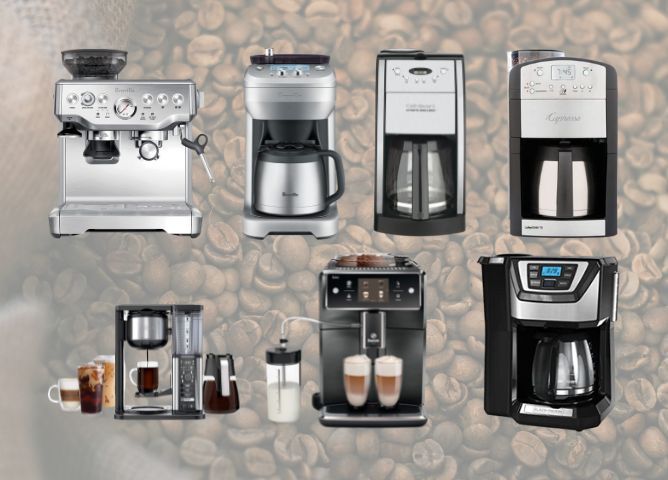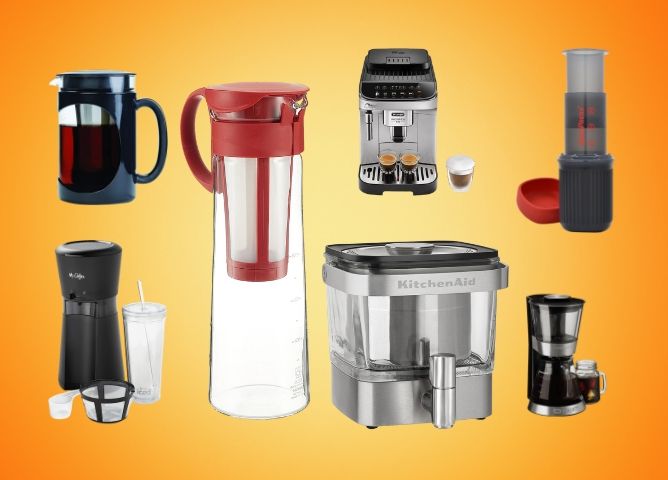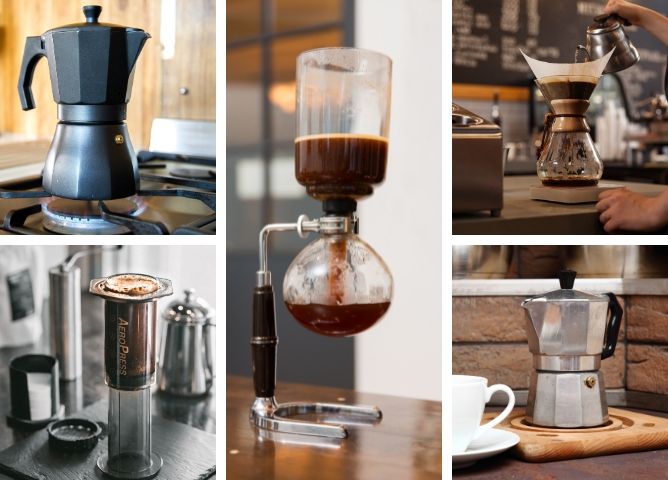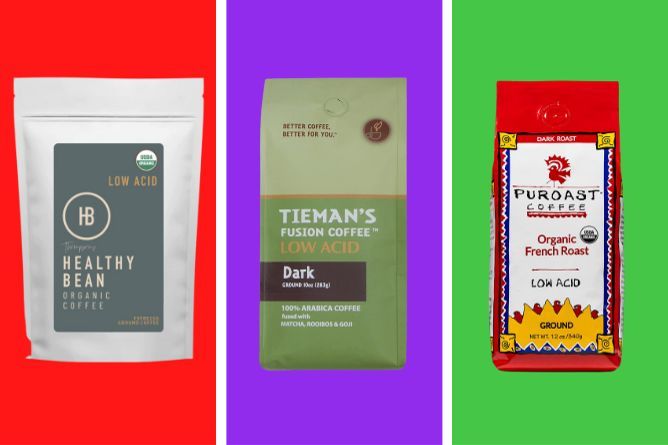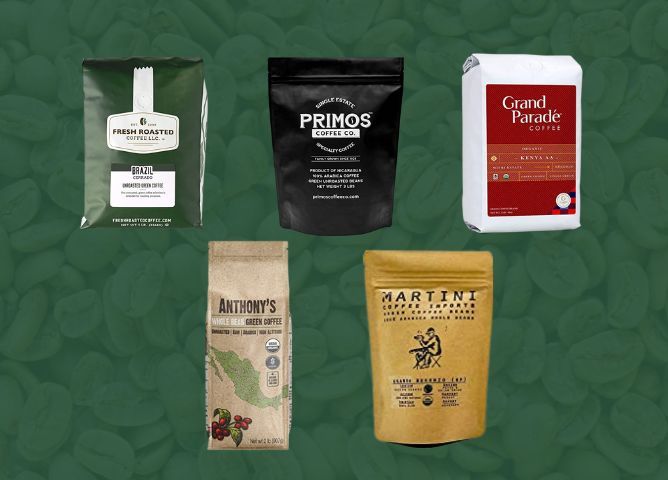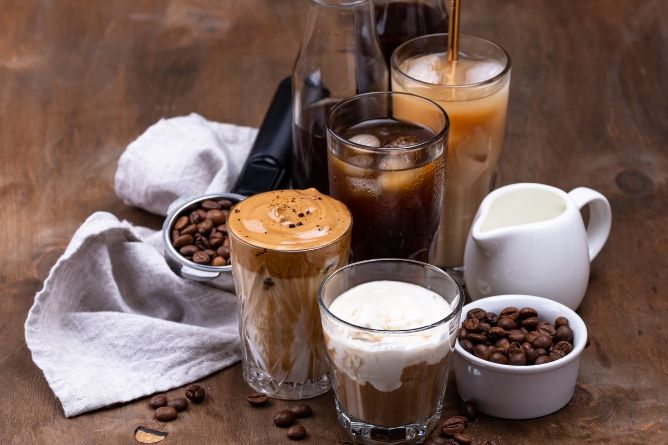In This Article
This post may contain affiliate links, please see our privacy policy for details.
Cold brew coffee has gained a cult-like following among coffee enthusiasts and baristas alike. Even if you're not a coffee expert, you've likely heard of this popular beverage and how it provides a unique set of benefits. Funny enough, this coffee was originally an afterthought over 400 years ago and has now become one of the most trendy types of coffee around!
What sets cold brew coffee apart from others? In this post, we'll cover everything from the traditional preparation methods to the exciting new twists that are popping up. Get ready to explore all things cold brew - we promise it'll give you just enough buzz without burning your tongue!
What Is Cold Brew Coffee
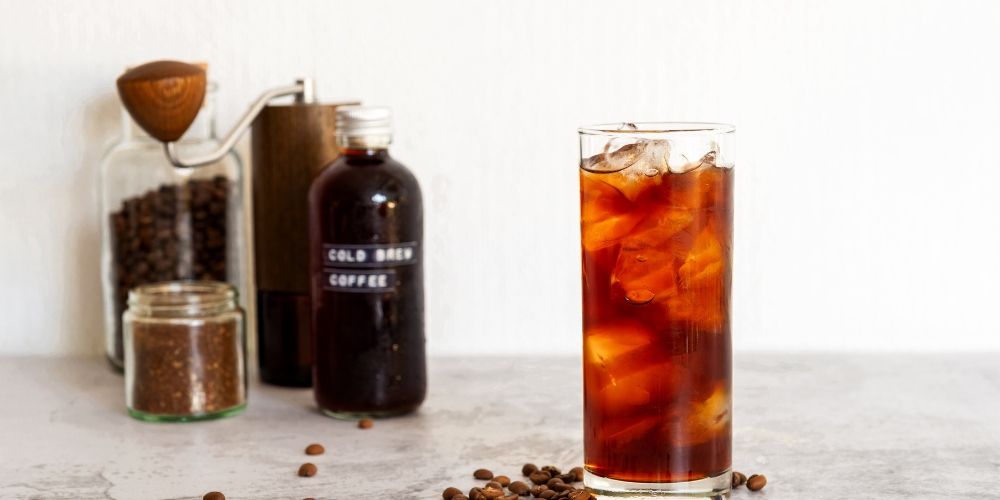
Cold brew coffee has become a popular trend in recent years, and for good reason. This gourmet coffee is brewed in a unique way, resulting in a distinct flavor profile that sets it apart from hot brewed coffee.
Cold brew coffee is made by steeping coffee grounds in cold water for an extended period of time, usually 12 to 24 hours. This slow brewing process results in a smoother, less acidic coffee with a distinct chocolatey and nutty flavor.
Cold Brew Concentrate Ratio
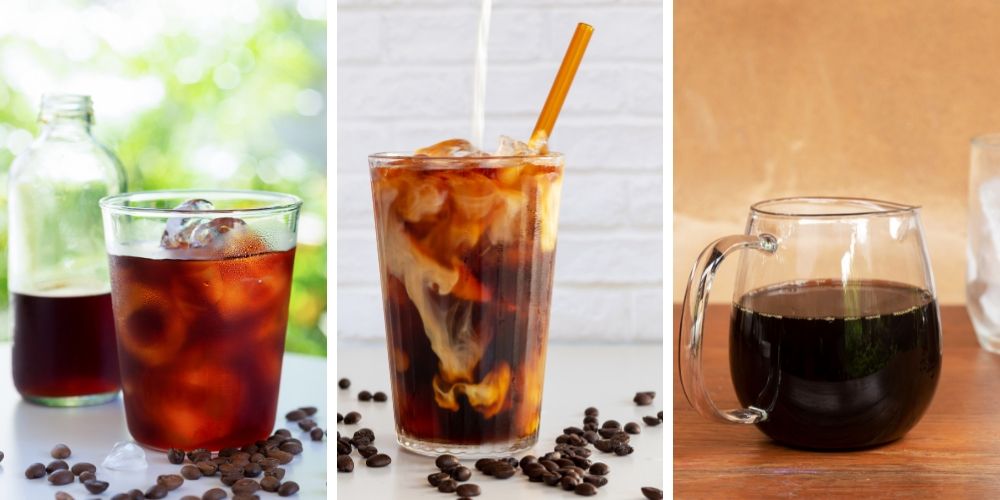
To achieve the perfect cold brew, it's important to choose the right coffee concentrate ratio. A higher ratio of coffee to water is ideal for those who prefer a stronger coffee with a bolder, more robust flavor and a higher caffeine content. Use a ratio of 1:4 coffee to water for a cold brew concentrate.
In contrast, a lower ratio of coffee to water is perfect for those who prefer a milder, smoother coffee with lower caffeine levels. Use a ratio of 1:8 coffee to water for mild cold brew. Additionally, using a coarse grind size is crucial to prevent over-extraction, resulting in a bitter taste.
Cold Brew Coffee Taste
Cold brew coffee is known for its reduced acidity and smoothness, achieved through steeping coffee beans in cold water for 12 to 24 hours. This produces a velvety texture that is easy to drink and is less harsh on the stomach.
The final taste of cold brew coffee is influenced by factors like the origin of the beans and brewing technique, making it a great choice for those who prefer a full-bodied and naturally sweet flavor. Individuals can also customize their cold brew experience by adding milk, cream, sugar, or other flavorings.
Cold Brew Coffee Bean Types
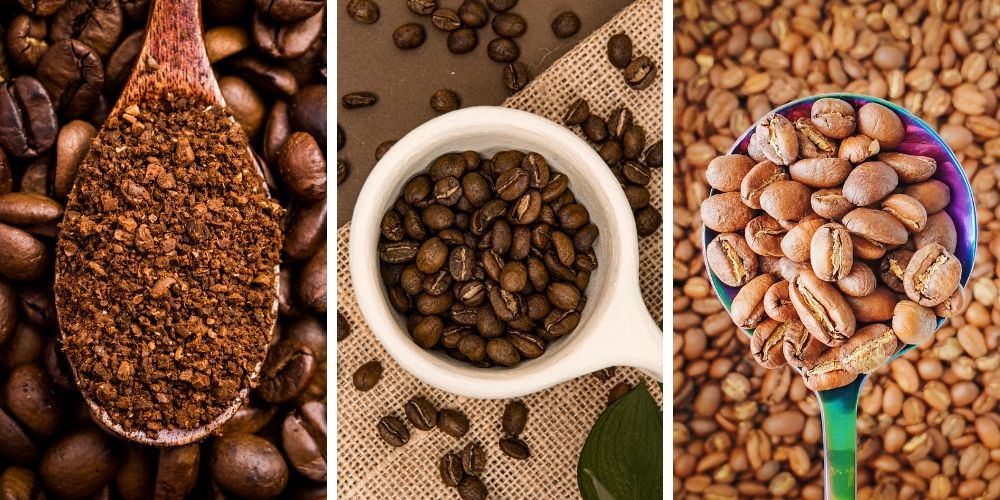
Coarse grounds lead to a smoother and less bitter cold brew, while fine grounds may result in over-extraction and a stronger, more bitter taste. The roast level of the beans also affects taste and caffeine levels, with light roasts being more acidic and high in caffeine, while dark roasts have a bold flavor and lower caffeine content.
Cheaper beans may be a more cost-effective solution for infrequent consumption, but investing in higher-quality beans can lead to a richer and more complex flavor profile. Other variables to consider include origin, water, and brewing techniques.
Cold Brew Coffee Bean Tools
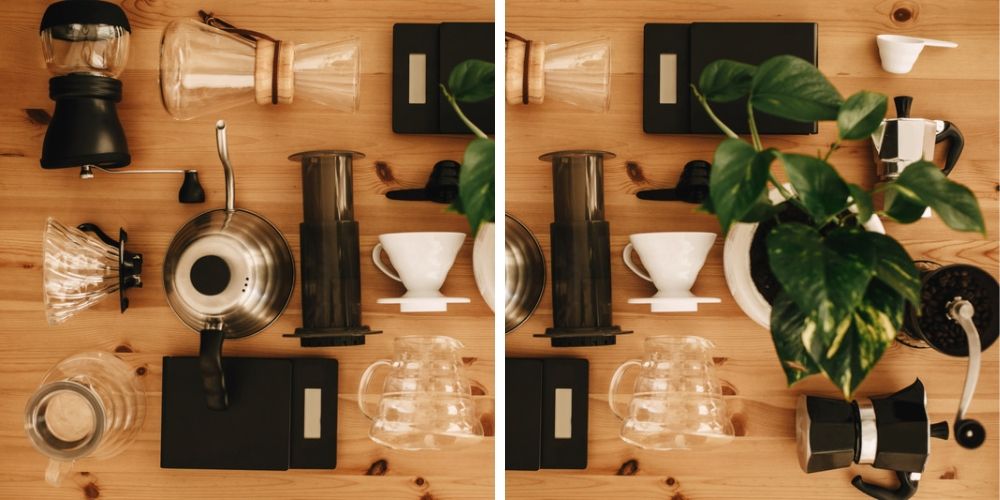
To make the perfect cold brew coffee at home, you need the right tools and techniques. Choose a large enough brewing vessel with a lid, such as a mason jar or French press.
Use medium or dark roast coffee beans ground to a coarse texture with a burr grinder. For the immersion method, steep the coffee grounds in cold water for 12-24 hours in a 1:4 or 1:8 coffee to water ratio.
Strain the coffee using a fine-mesh sieve or cheesecloth, pressing down on the grounds to extract more flavor. Alternatively, use the slow drip method with a specialized cold brew tower or dripper. Experiment with different beans, ratios, and techniques to find your perfect cup of cold brew coffee.
RELATED ARTICLE: Curious to know more about iced coffee? Take a peek at our latest post, "What is Iced Coffee: A Journey Through Global Varieties and Brewing Techniques," for a fun and insightful deep-dive into the refreshing world of chilled coffee delights!
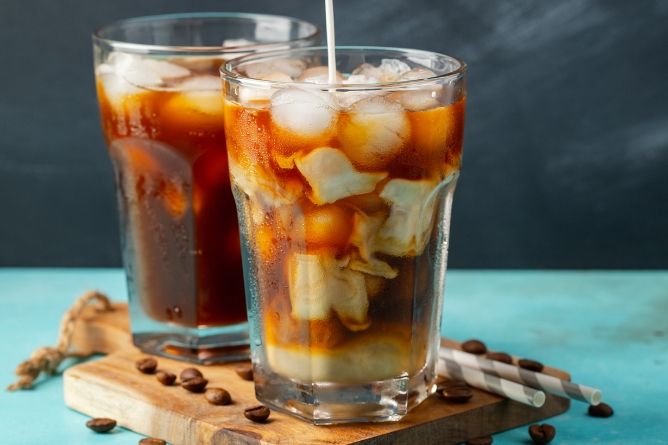
How Cold Brew Coffee is Made
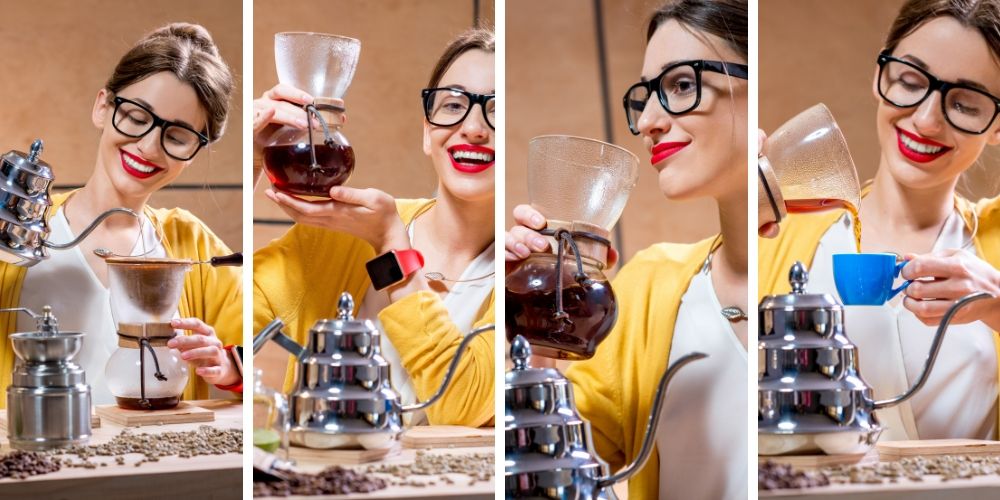
Cold brew coffee is gaining popularity for its smooth and naturally sweet taste, making it a perfect refreshment for a warm day. Unlike hot coffee, cold brew coffee is made by steeping coarse, freshly ground coffee beans in cold water for 12-24 hours. This slow extraction process releases the flavors slowly, resulting in a less acidic and smoother taste.
To make cold brew coffee, you can use any brewing vessel that can hold water and coffee grounds, but a mason jar or French press are popular options. The immersion method is commonly used, which involves combining the coffee and water in a ratio of 1:4 for concentrate or 1:8 for mild cold brew, and then leaving it to steep covered.
After 12-24 hours, the coffee is strained to remove the grounds. Another way to enjoy cold brew coffee is by using coffee ice cubes to cool down and dilute your cold brew coffee without losing any flavor.
Cold brew coffee is now available in many coffee shops, and some use specialized towers or drippers that use the slow drip method. Cold brew coffee is a delicious and refreshing alternative to hot coffee, and you can make it easily at home with freshly ground coffee beans and a brewing vessel.
Benefits of Cold Brew Coffee
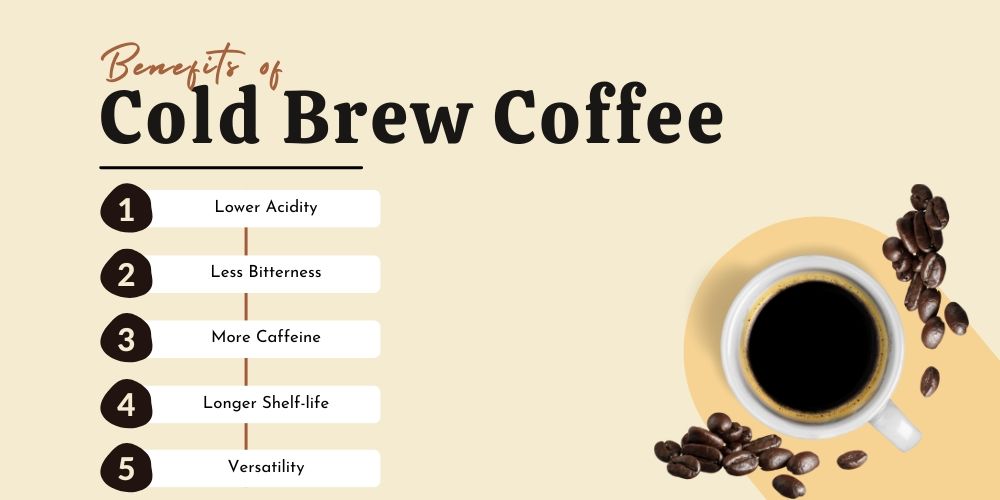
One of the most significant benefits of cold brew coffee is its lower acidity levels. When coffee is brewed with hot water, the heat can extract more acids and oils from the beans, resulting in a more bitter taste. Cold brewed coffee, on the other hand, is steeped in cold water, which extracts fewer acids, resulting in a smoother and less bitter taste. This makes it a great option for those who may have sensitive stomachs or acid reflux.
Another benefit of cold brew coffee is its versatility. Because it's brewed at room temperature or colder, it can be enjoyed both hot or cold, depending on personal preference. Additionally, because it has a naturally sweet taste, many people find they don't need to add any additional sweeteners or milk, making it a healthier alternative to other coffee drinks.
Cold brew coffee is also known for having a higher caffeine content than hot coffee. While this can vary depending on the brewing method and the type of beans used, the extended steeping time allows for more caffeine to be extracted from the coffee grounds, resulting in a more potent brew.
If you're someone who enjoys experimenting with different brewing methods, cold brew coffee offers a unique opportunity to do so. Because it's a slower process, you can adjust the brewing time or the coffee-to-water ratio to find your perfect cup of coffee. Whether you prefer a bold and strong taste or a more mild and smooth flavor, you can tailor your cold brew coffee to your personal taste.
Finally, many people enjoy the convenience of cold brew coffee. It can be prepared in large batches and stored in the refrigerator, allowing you to have coffee on hand for several days. This makes it a great option for those who may not have time to prepare coffee each morning or for those who want to enjoy a cold beverage on a hot day without having to leave their home.
RELATED ARTICLE: Discover a world of coffee bliss as you enjoy our refreshing How to Make Iced Coffee: 9 Delectable Recipes to keep you cool and energized all summer long.
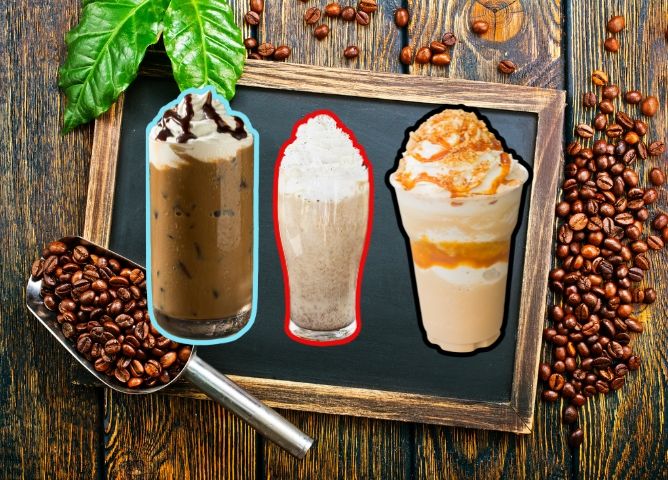
Popular Variations of Cold Brew Coffee
Whipping up cold brew coffee might seem like a challenge, but with a dash of imagination, the flavor profiles you can achieve are limitless. Let's delve into some trendy variations that not only enhance the essence of cold brew coffee but also take your coffee experience to another level.
Traditional Cold Brew
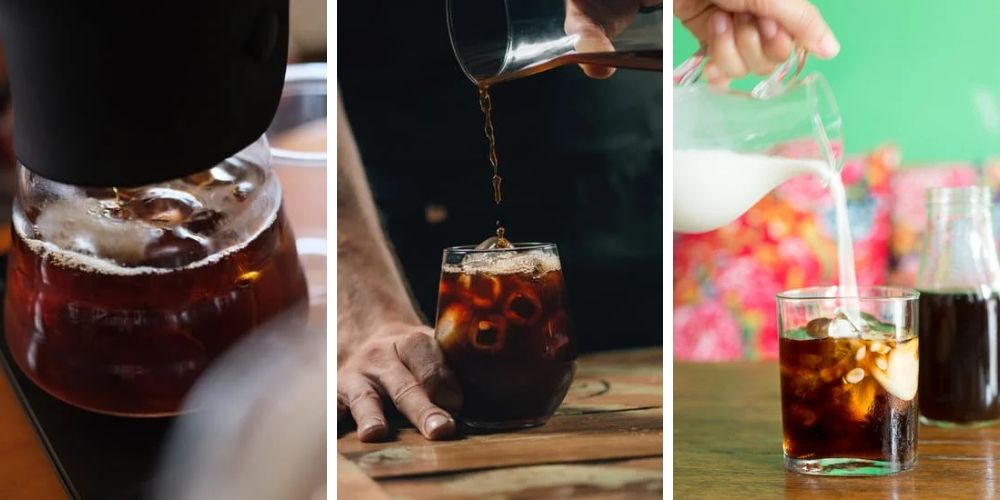
This is the most basic form of cold brew coffee. It is brewed cold, steeped for an extended period (12-24 hours), and served over ice.
Nitro Cold Brew
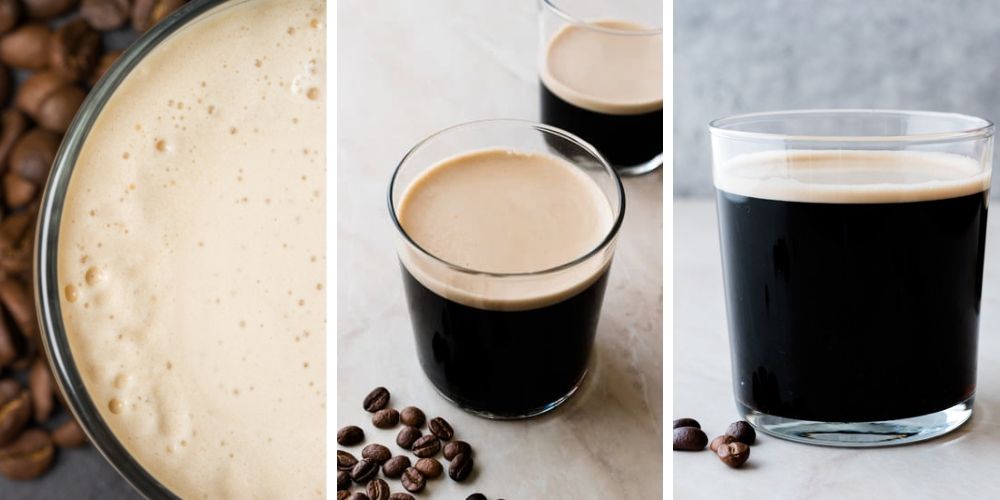
Cold brew coffee that is infused with nitrogen gas, which creates a creamy, stout-like effect when poured from a tap. It is served cold and often without any ice.
Japanese-Style Iced Coffee
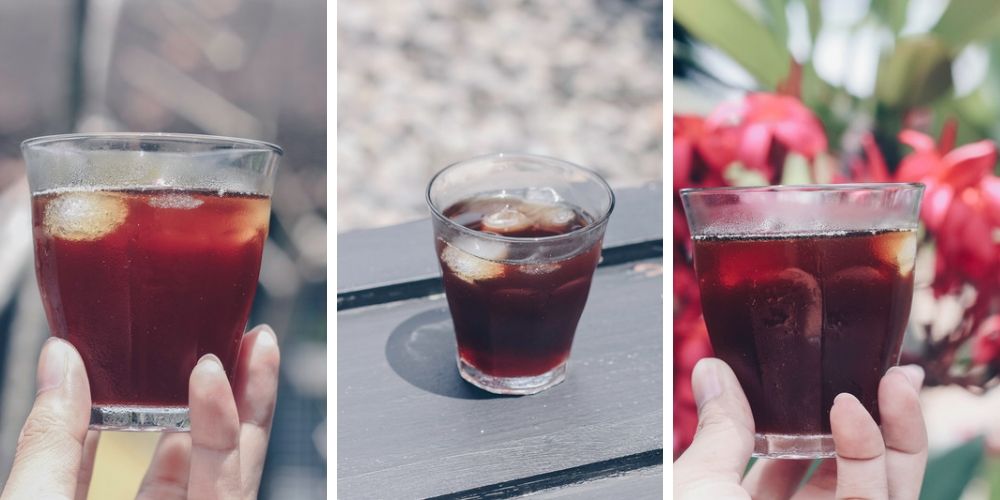
This method involves brewing coffee with hot water directly onto ice. The quick cooling preserves the coffee's acidity and aromatic oils, which can be muted in traditional cold brew methods.
Cold Brew Concentrate
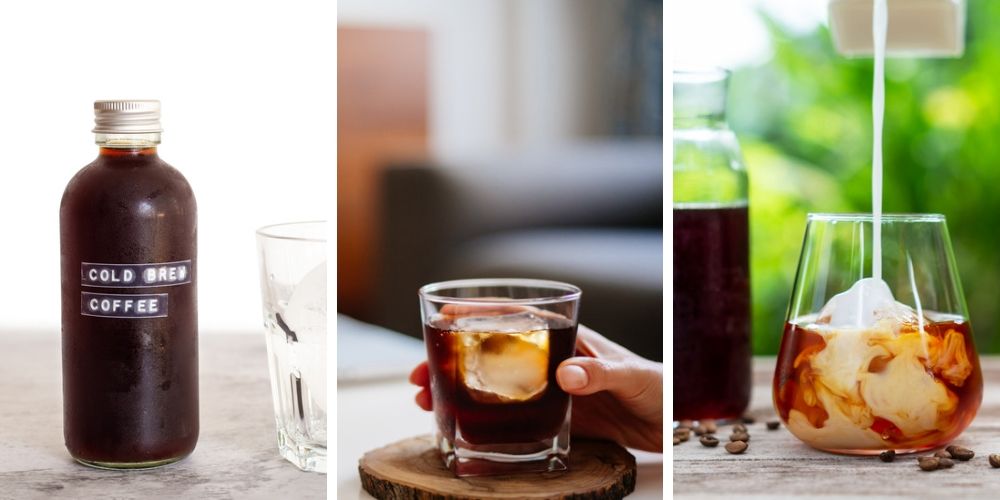
A highly concentrated form of cold brew that is meant to be diluted with water or milk before drinking.
New Orleans-Style Cold Brew
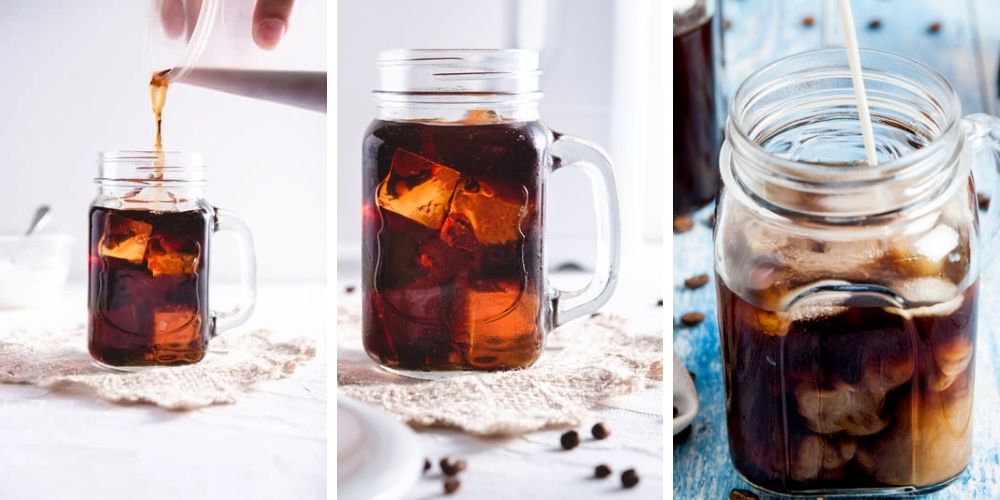
This style involves brewing cold brew with chicory, which gives the coffee a slightly sweet, chocolatey flavor. It's usually served with milk and sugar.
Flash Brew or Snap Chilled Coffee
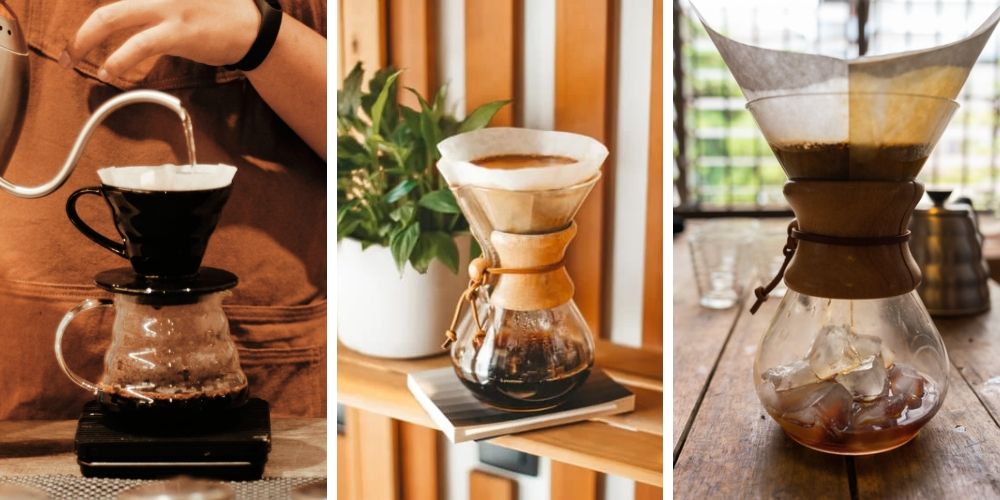
Similar to the Japanese method, flash-brewed coffee is brewed hot and then rapidly chilled, preserving the coffee's acidity and complex flavors.
Cold Brew with Milk or Alternative Milk
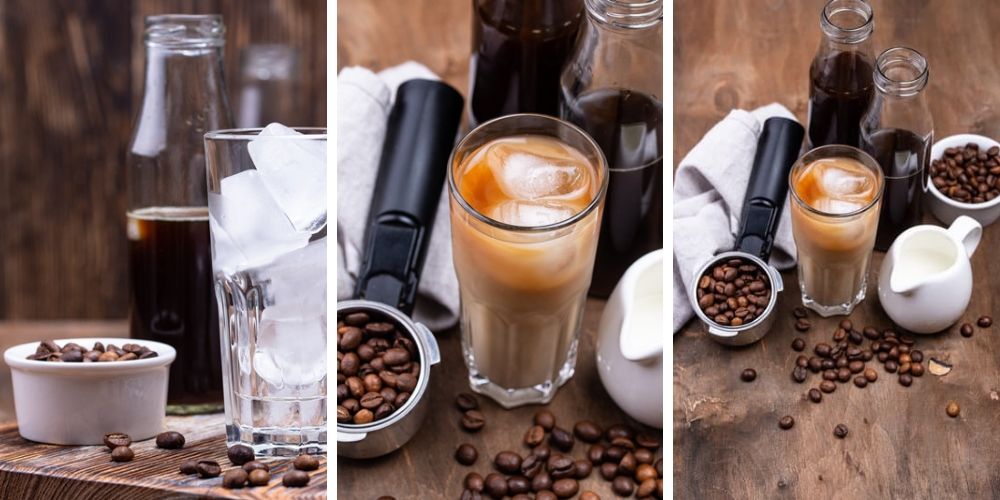
Cold brew coffee mixed with milk, almond milk, oat milk, or other dairy alternatives.
Flavored Cold Brew Coffee
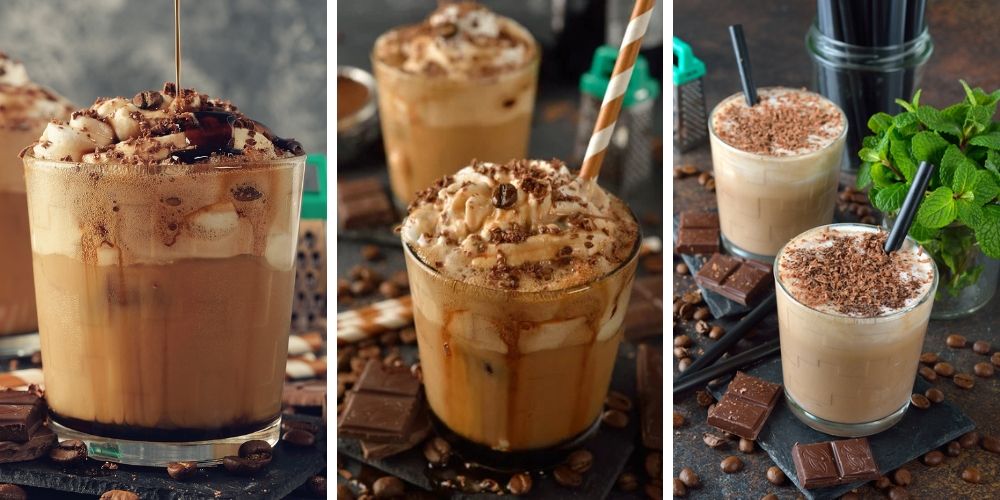
Cold brew coffee that's been flavored with syrups, spices, or other flavorings. Examples include vanilla, caramel, cinnamon, and more.
Sparkling Cold Brew
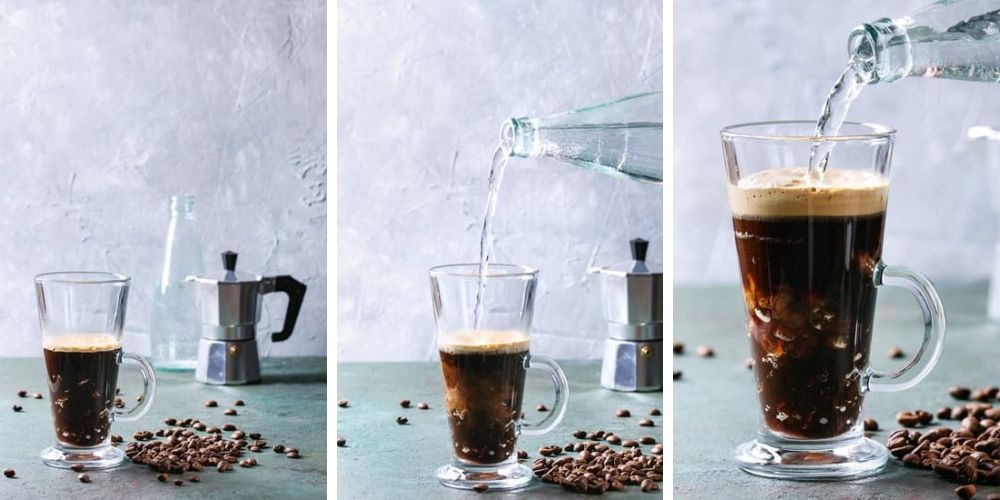
A relatively new trend, this is cold brew coffee mixed with sparkling water for a bubbly effect.
Cold Brew Cocktails
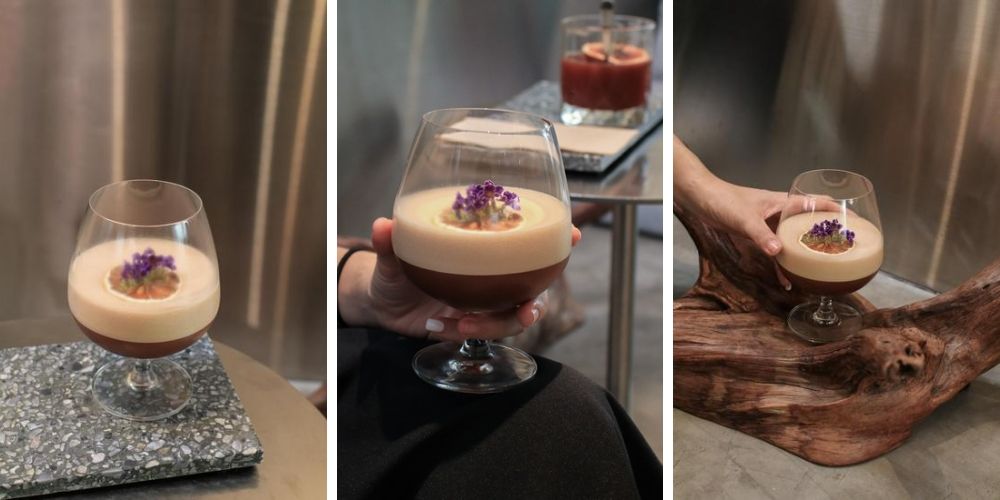
Cold brew coffee is also being used as a mixer in alcoholic cocktails for an extra flavor and caffeine kick.
RELATED ARTICLES: Eager to experiment with diverse coffee beans? Don't miss our top selections for Mushroom Coffee, Low Acid Coffee, and Green Coffee, specially curated to delight your taste buds and elevate your coffee experience!
Cold Brew Coffee Differences
Navigating the world of cold brew coffee may initially seem intimidating, but with a little bit of knowledge and a splash of curiosity, there's a whole universe of flavors waiting to be explored. Let's journey through some distinctive variations of cold brew coffee that not only bring out its unique characteristics but also elevate your entire coffee-drinking experience.
Cold Brew vs Iced Coffee
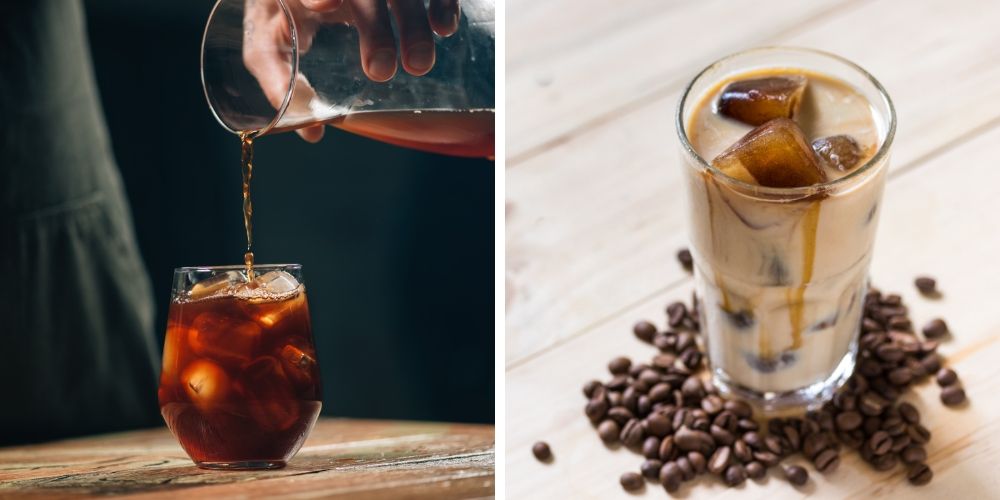
Iced coffee is brewed hot and then cooled down with ice, while cold brew coffee is brewed cold using room temperature water and steeped for an extended period of time, usually 12-24 hours. Cold brew coffee has a smoother, less acidic taste compared to iced coffee, which can sometimes taste bitter or watered down when ice melts. Cold brew coffee also has a higher caffeine content per serving than iced coffee, as the cold brewing process extracts more caffeine from the beans.
Cold Brew vs Nitro Cold Brew
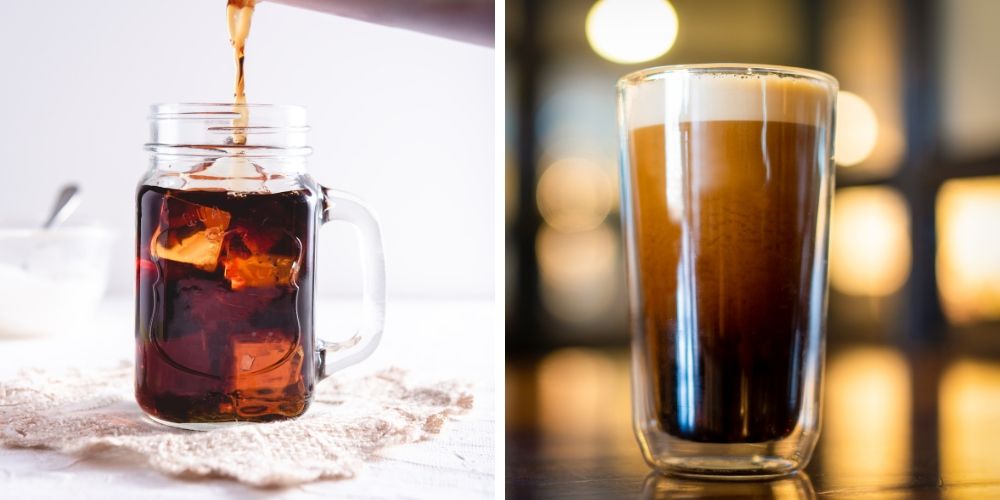
Nitro cold brew is cold brew coffee infused with nitrogen gas, which gives it a creamy, frothy texture similar to beer on tap. The brewing process for nitro cold brew is similar to cold brew coffee, but it is served from a keg with a nitrogen tap. Nitro cold brew has a smoother, creamier texture than regular cold brew coffee and is often served without ice. Nitro cold brew coffee is also typically more expensive due to the equipment and process required to make it.
Cold Brew vs Japanese Iced Coffee
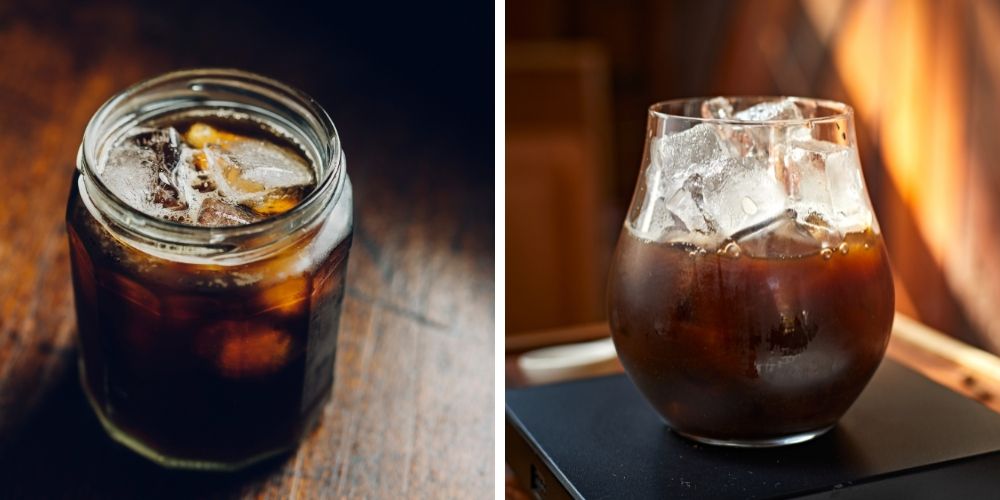
Japanese iced coffee, also known as flash brewed coffee, is brewed hot and then immediately cooled down with ice. This quick cooling process preserves the flavors and acidity of the coffee, resulting in a bright and vibrant flavor profile. Cold brew coffee, on the other hand, has a smoother, less acidic taste due to the slow steeping process. Japanese iced coffee is a great option for those who prefer a brighter, more vibrant coffee flavor.
Cold Brew vs Drip Coffee
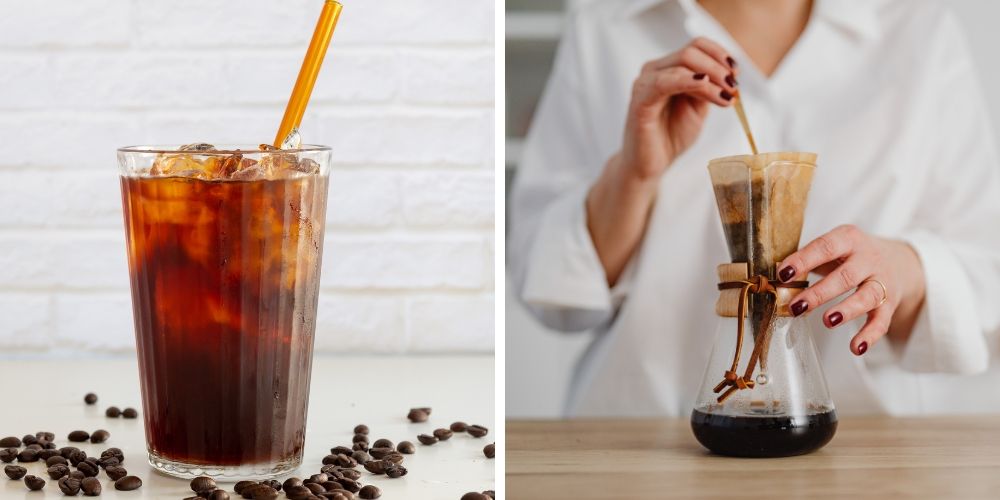
Drip coffee is brewed hot using a coffee maker or pour-over method, while cold brew coffee is brewed cold using room temperature water and steeped for an extended period of time. Drip coffee has a bolder, richer flavor profile compared to cold brew coffee, which has a smoother, less acidic taste. Drip coffee is also brewed quickly, while cold brew coffee requires a longer steeping process.
Cold Brew vs Espresso
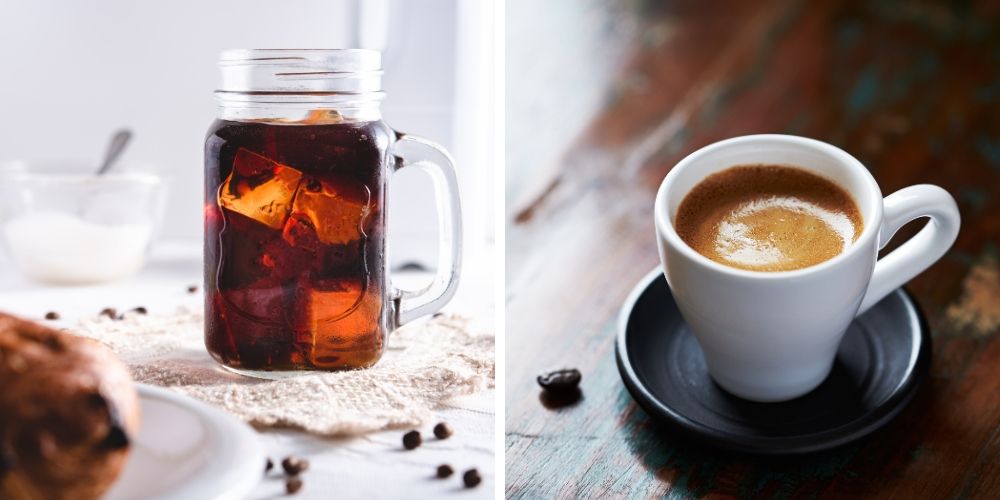
Espresso is a concentrated, highly caffeinated drink made by forcing hot water through finely ground coffee beans at high pressure. Cold brew coffee is brewed cold using room temperature water and steeped for an extended period of time. Espresso has a strong, bold flavor profile and a high caffeine content, while cold brew coffee has a smoother, less acidic taste and a slightly lower caffeine content per serving.
Cold Brew vs Americano
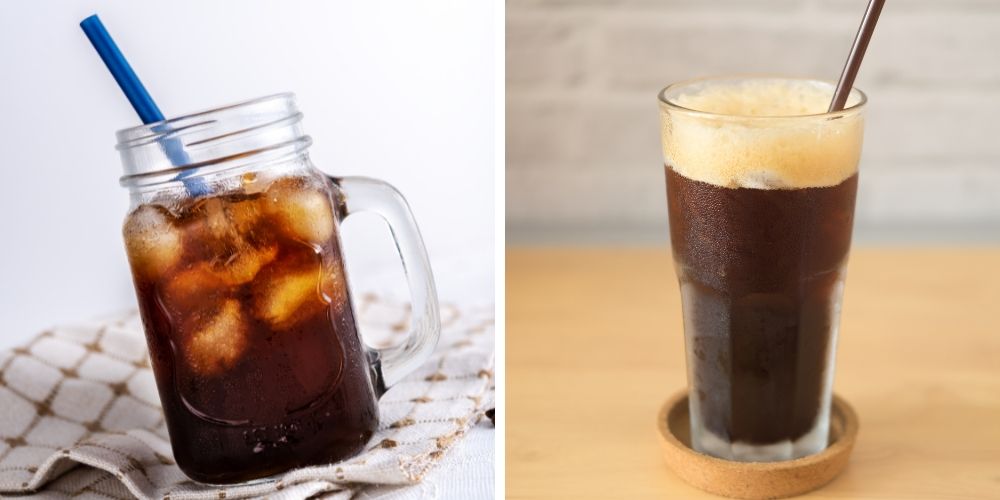
An Americano is made by adding hot water to a shot of espresso, while cold brew coffee is brewed cold using room temperature water and steeped for an extended period of time. An Americano has a bolder, richer flavor profile compared to cold brew coffee, which has a smoother, less acidic taste. An Americano also has a higher caffeine content per serving than cold brew coffee.
How to Make Cold Brew Coffee at Home
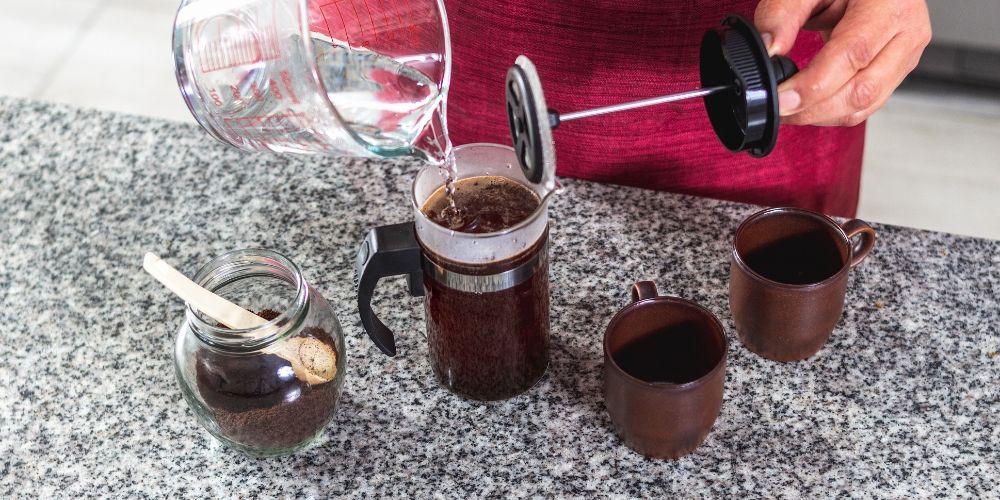
Are you looking for a refreshing and energizing coffee drink to beat the summer heat? Look no further than cold brew coffee! This delicious beverage is easy to make from the comfort of your own home and is perfect for those who love coffee but don't want the added heat of a hot cup.
To get started, you will need a few essential pieces of equipment and ingredients. You will need coffee beans, cold water, a mason jar, a lid, and a coffee filter. The coffee beans should be coarsely ground and can be either regular or decaf, depending on your preference.
Now that you have all of your equipment and ingredients ready, it's time to start making your cold-brew coffee. Follow these simple steps:
- Add your coarsely ground coffee to the mason jar. A good rule of thumb is to use a 1:4 ratio of coffee to water, but you can adjust this depending on how strong you like your coffee.
- Add cold water to the jar, filling it almost to the top. Make sure all of the coffee grounds are saturated with water.
- Place the lid on the jar and give it a good shake to ensure that all of the coffee grounds are fully mixed with the water.
- Place the jar in the refrigerator and let it steep for at least 12 hours, or up to 24 hours if you prefer a stronger brew.
- After the coffee has steeped, strain it through a coffee filter to remove any remaining grounds.
- Dilute the coffee with cold water to taste and serve over ice.
Now that you know how to make cold brew coffee at home, it's time to start experimenting with different blends and ratios to find the perfect combination for your taste buds. For example, try using different types of coffee beans or adjusting the ratio of coffee to water to find the perfect balance. You can also experiment with different storage techniques to keep your cold brew fresh for longer.
With these tips and tricks, you'll be able to perfect your home brew and enjoy delicious cold coffee all summer long. So why not give it a try and see what delicious creations you can come up with? Happy brewing!
RELATED ARTICLES: Ready to dive deeper into the realm of coffee making? Be sure not to miss our handpicked selections of Coffee Maker with Grinders, Iced Coffee Makers, and Manual Coffee Makers. These are specially chosen to enhance your coffee brewing journey and take your coffee moments to a whole new level of delight!
Pairing Food with Cold Brew Coffee
include an image of cold brew coffee served with some of the suggested food pairings. This could be a breakfast setup with pastries, or an afternoon setup with some light snacks.
Cold brew coffee is a versatile drink that pairs well with many different foods. Whether you prefer sweet or savory flavors, there is a perfect food pairing for cold brew coffee. So next time you visit a coffee shop or make a hot cup of cold brew coffee at home, consider trying out one of these delicious food pairings.
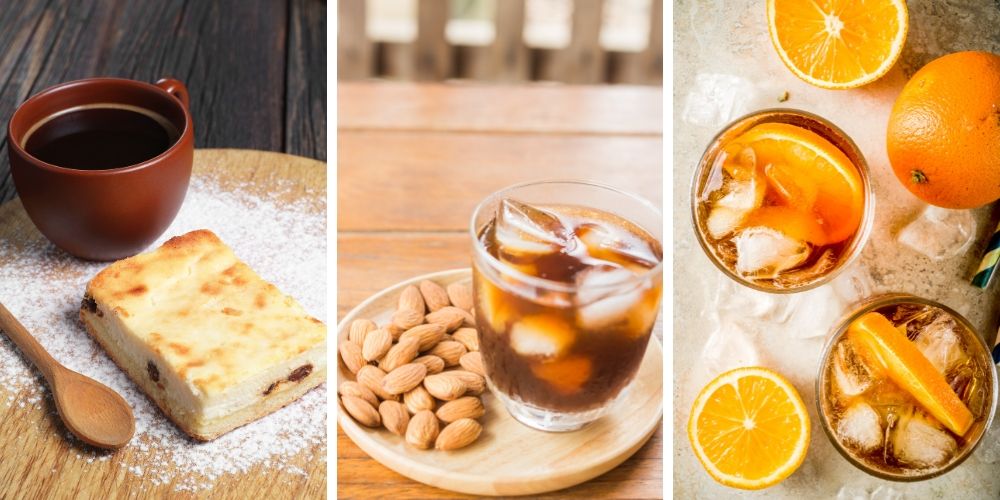
Ideal Food Pairings
- Dark chocolate: the bitterness of the chocolate complements the smoothness of the cold-brew coffee
- Cheese: a slice of sharp cheese pairs well with cold brew coffee, creating a perfect balance of flavors
- Citrus fruits: a slice of lemon or orange with cold brew coffee creates a refreshing and tangy flavor combination
- Grilled meat: the smokiness of grilled meat is a perfect contrast to the smoothness of cold-brew coffee
- Nutty flavors: cold brew coffee pairs well with nutty flavors such as almonds and hazelnuts, creating a rich and complex flavor profile
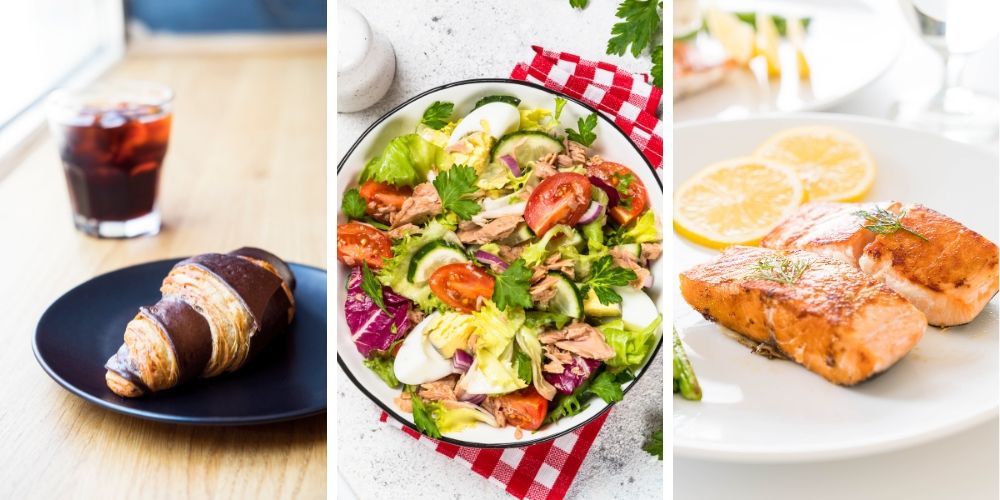
Suggestions for Different Times of Day and Occasions:
- Breakfast: pair your cold brew coffee with a croissant or pastry for a light and delicious breakfast
- Brunch: a savory quiche or breakfast sandwich is a great option to pair with cold brew coffee during brunch time
- Lunch: a sandwich or salad with fresh greens is a great option for a light and refreshing lunch paired with cold-brew coffee
- Dinner: grilled fish or chicken paired with cold brew coffee creates a perfect balance of flavors for a hearty dinner
- Dessert: a slice of cake or pie paired with cold-brew coffee is a decadent and delicious dessert option
- Snacks and appetizers: nuts, olives, and charcuterie boards are great options for snacks and appetizers paired with cold-brew coffee
- Occasions: for casual get-togethers, pair cold brew coffee with a cheese and fruit platter. For date nights or formal events, pair cold brew coffee with dark chocolate or a rich dessert.
Final Thoughts
We have covered everything you need to know about cold brew coffee, from its history and traditional brewing methods to its trendier variations. We have explored the different flavors, brewing techniques, and equipment used to create the perfect cold-brew coffee. Whether you prefer a classic, traditional cup of cold brew or a nitro-infused, trendy variation, there's a cold brew coffee out there for everyone.
We encourage you to try making your own cold brew coffee at home using our step-by-step guide or to visit your local coffee shop and try out the many cold brew coffees they offer. With its smooth taste and energizing benefits, cold brew coffee is a delicious and refreshing addition to any coffee lover's repertoire.
💡DIVE INTO THE WORLD OF COFFEE
Discover more coffee bliss with our enticing Coffee Series: Coffee Maker with Grinder, Iced Coffee Makers, Manual Coffee Makers, Mushroom Coffee, Low Acid Coffee, Green Coffee
